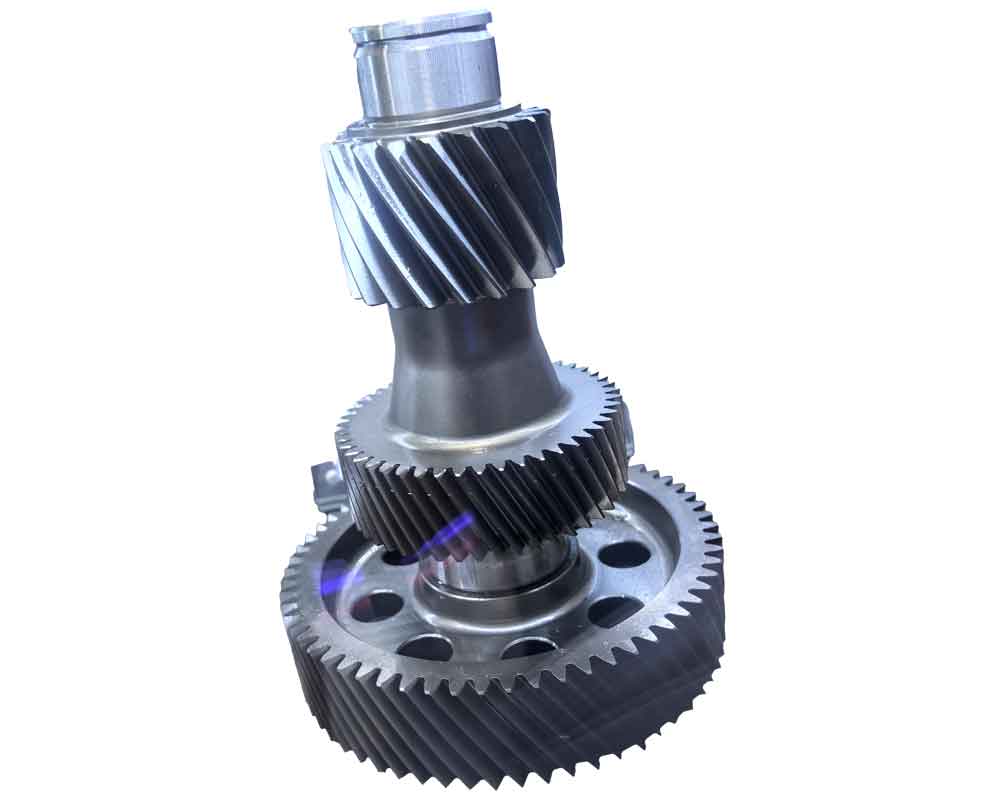High-frequency induction quenching is a critical process in gear technology that significantly enhances the material properties of SAE J403 carbon structural steel, including rigidity, hardness, wear resistance, and fatigue strength. This treatment is particularly vital for automotive electronic parking gears, where surface durability directly impacts transmission reliability and longevity. Traditional methods for evaluating hardened layer depth—such as metallographic examination, hardness testing, and eddy current detection—suffer from destructive sampling requirements and inconsistent results. This study introduces a non-destructive ultrasonic approach using nonlinear coefficient analysis to characterize hardened layer depth accurately.
The theoretical foundation relies on nonlinear wave propagation in solids. The one-dimensional nonlinear wave equation is expressed as:
$$ \rho_0 \frac{\partial^2 u}{\partial t^2} = k_2 \frac{\partial^2 u}{\partial x^2} + (3k_2 + k_3) \frac{\partial u}{\partial x} \frac{\partial^2 u}{\partial x^2} $$
where \(\rho_0\) denotes material density, \(k_2\) is the second-order elastic constant, and \(k_3\) is the third-order elastic constant. The nonlinear coefficient \(\beta\) is defined as:
$$ \beta = -\frac{3k_2 + k_3}{k_2} $$
Solving this equation yields the displacement approximation:
$$ u(x,t) = A_0 \sin(kx – \omega t) + \frac{1}{8} (A_0^2 k^2 \beta x) \cos 2(kx – \omega t) $$
Here, \(A_1 = A_0\) represents the fundamental wave amplitude, and \(A_2 = \frac{A_0^2 k^2 \beta x}{8}\) is the second harmonic amplitude. The relative nonlinear coefficient \(\beta’\) is derived as:
$$ \beta’ = \frac{A_2}{A_1^2} $$
Since experimental parameters remain constant, \(\beta = \beta’\), enabling direct correlation with hardened layer depth.
Experimental Methodology
SAE J403 carbon steel specimens were prepared with hardened layer depths of 0–8 mm through high-frequency induction quenching, followed by cooling and tempering at 150°C. Table 1 details the material’s chemical composition.
| C | Mn | Si | P | S | Ni | Cr | Mo | Fe |
|---|---|---|---|---|---|---|---|---|
| 0.53 | 1.38 | 0.16 | 0.028 | 0.033 | 0.16 | 0.18 | 0.05 | Bal. |
Ultrasonic testing employed a 5 MHz transducer, a signal transceiver, a high-speed A/D card (50 MHz sampling rate), and a PC. Ultrasonic pulses propagated through the hardened layers, with captured signals processed using Fast Fourier Transform (FFT) for spectral analysis. The experimental configuration is illustrated below:

Metallographic analysis confirmed microstructural changes: quenched samples exhibited finer, denser grain structures compared to unquenched specimens, with distinct layer stratification at greater depths.
Results and Analysis
Time-domain waveforms (Figure 3) revealed amplitude attenuation variations across hardened layers. FFT processing generated frequency-domain spectra (Figure 4), from which \(A_1\) and \(A_2\) were extracted. Table 2 summarizes these amplitudes and the derived nonlinear coefficients (\(\beta\)).
| Hardened Depth (mm) | \(A_1\) (V) | \(A_2\) (V) | \(\beta\) (×10⁻³) |
|---|---|---|---|
| 0 | 47.81 | 1.76 | 0.70 |
| 2 | 60.00 | 4.65 | 1.29 |
| 3 | 86.79 | 10.05 | 1.33 |
| 4 | 93.67 | 12.08 | 1.38 |
| 6 | 98.87 | 13.90 | 1.45 |
| 8 | 143.70 | 29.56 | 1.46 |
Nonlinear coefficients increased monotonically with hardened layer depth (Figure 5), demonstrating a strong correlation. The growth rate varied: highest at 0–2 mm (0.59×10⁻³/mm), declining to 0.04×10⁻³/mm at 6–8 mm. This behavior reflects microstructural saturation, where grain refinement plateaus at greater depths. A regression model quantified this relationship:
$$ \beta(x) = 0.00005986 \cdot \sin(x – \pi) – 0.00000823 \cdot (x – 10)^2 + 0.001596 $$
where \(x\) is the hardened depth in mm. This equation enables depth prediction via \(\beta\) measurements.
Conclusions
- Nonlinear ultrasonic detection provides a robust, non-destructive method for evaluating hardened layer depth in SAE J403 steel, enhancing quality control in gear technology.
- Ultrasonic nonlinear coefficient \(\beta\) increases with hardened layer depth due to microstructural densification. Higher grain density in quenched zones facilitates ultrasonic wave propagation, elevating \(\beta\).
- The derived empirical model \(\beta(x)\) enables precise depth quantification, supporting optimization of quenching processes for critical gear components.
This methodology advances gear technology by enabling real-time, non-invasive inspection of surface-hardened components, ensuring optimal performance in automotive transmission systems.
